Days 6 & 7: Chasing Iceland Waterfalls Along the Golden Circle
As our Iceland road trip was coming to an end & only 2 more days left on the itinerary, we started heading back west towards Reykjavík to close out our adventure with the Golden Circle. Along the way, we had set aside some time to visit a couple more notable Iceland waterfalls (as we could not get enough of these magical wonders!).
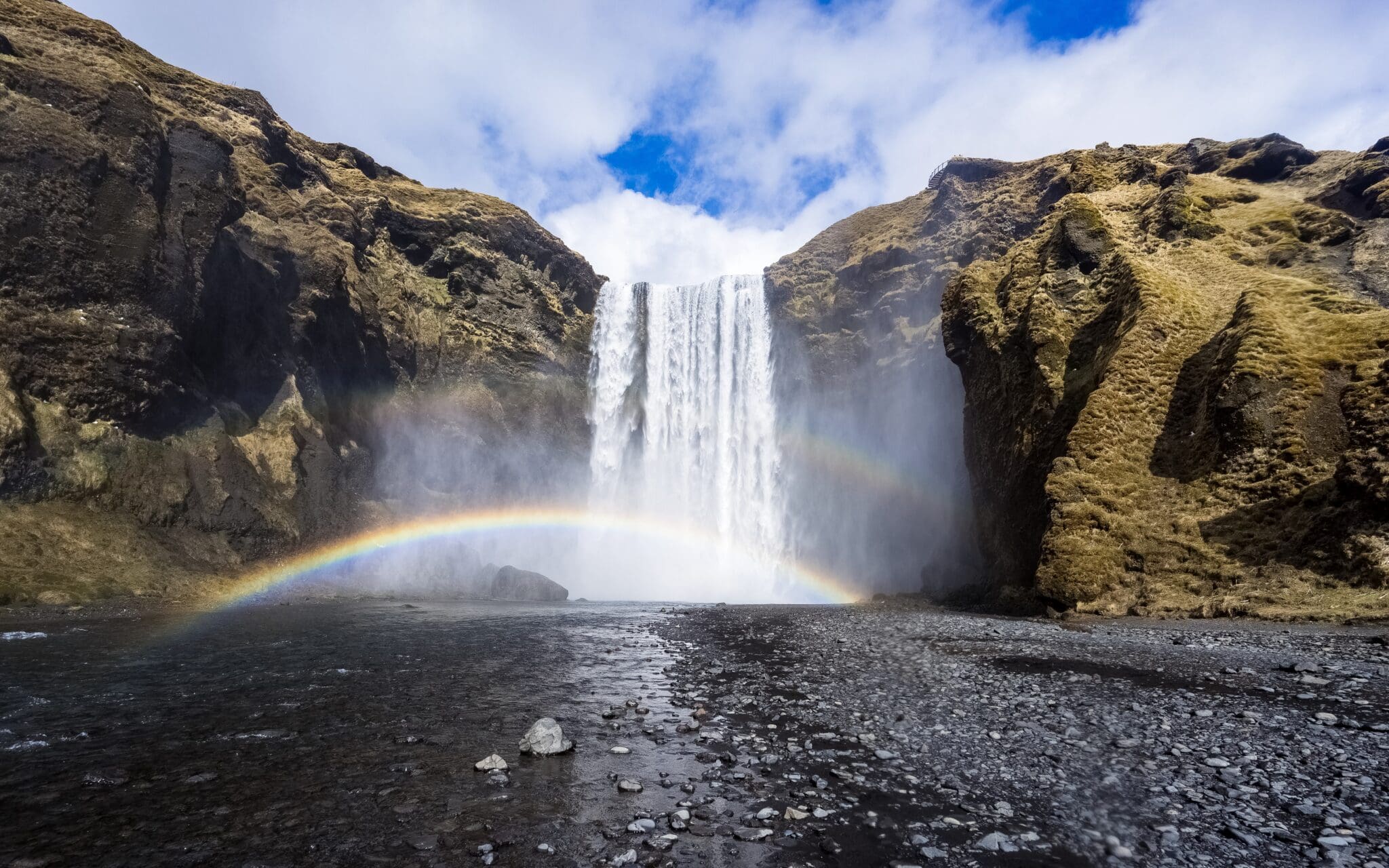
Please note: This post contains affiliate links.
This means that, at no extra cost to you, I may receive a small commission if you make a purchase through my affiliate link.
You may read my full disclosure policy here.
Skógafoss
Skógafoss has been featured in many travel photography portfolios as it is quite impressive any time of the year. Located right off of the Ring Road, this waterfall stands dramatically at almost 200 feet & you just can’t miss it. The waters are fed from two glaciers, Eyjafjallajökull & Mýrdalsjökull, that drop into a shallow basin producing a lot of spray.
According to legend, the first Viking settler of Skógar, Þrasi Þórólfsson, buried a treasure chest full of gold coins behind the falls. Yet no one has been able to uncover it nor debunk that myth. Many people have claimed to see the gold sparkling through the water, creating a rainbow or two. Thus another reason why Skógafoss makes for beautiful photos as rainbows are consistently spotted on sunny days.
To the right of the falls, you can climb a staircase of 370 steps to reach a viewing platform for a different perspective. There are smaller trails that lead along the river with more discrete waterfalls to enjoy. It is also the starting point for a strenuous 16 mile hike known as Fimmvörðuháls, or “Five Milestone Ridge.”
Just east of the waterfall is Skógar Museum that showcases thousands of regional folk craft artifacts & architectural history. It consists of 3 different museums (folk, open air, & technical) as well as 6 historical buildings. International history buffs would definitely appreciate this attraction as one can learn a lot about Iceland in 2 hours time. But because we were on a mission to get to the Golden Circle before nightfall, we decided to bypass it.
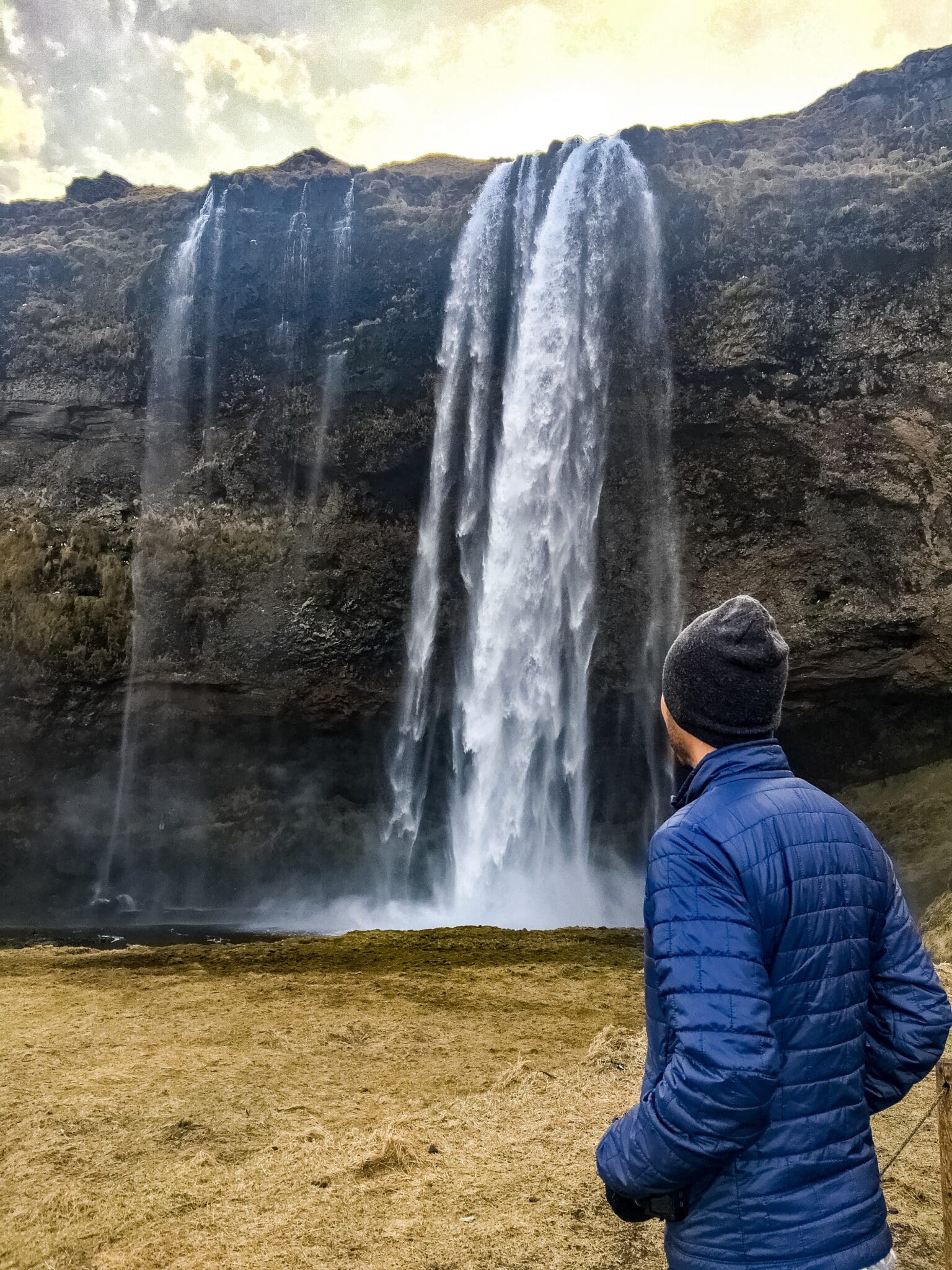
Seljalandsfoss
Many people visit Seljalandsfoss as it is one of the more easily accessible Iceland waterfalls from the Ring Road. You do have to pay 700 ISK ($5.50) for parking & there are credit card kiosks on the lot. Seljalandsfoss is favorable for its short three minute walk that takes you straight to the base of the falls. Its waters are fed from the glacier-capped Eyjafjallajökull & connects to the Seljalandsá river.
What also makes this waterfall special is the pedestrian bridge that allows you to walk behind its 200 foot falls. It takes you through a mystical mossy cavern that will make you believe Icelandic fairies are hiding nearby! If you continue on this path through a narrow crevice, you will eventually reach a hidden waterfall called Gljúfrabúi. Unfortunately, because of the dark & slippery conditions, we decided to forgo this one as well.
The Road to the Golden Circle
The Golden Circle is a popular tourist route that most people enjoy in one day. Along its course includes a variety of Iceland’s natural wonders & thus makes it an ideal layover destination for travelers short on time. Looping from Reykjavík into central Iceland & back, it is 900 miles roundtrip & takes about 3.5 hours to drive around it without any stops. It consists of three main attractions of Geysir, Gullfoss, & Þingvellir National Park (Day 7 of our road trip).
Haukadalur Geothermal Field
Haukadalur is a geothermal area in the Golden Circle that features two of Iceland’s most turbulent hot springs. The Great Geysir was the first geyser ever discovered by man & thus its namesake had originated from it. It has remained dormant since 1916, coming to life briefly in 1935 before going back to sleep again. During its livelier days, Great Geysir used to spout boiling hot water up to 260 feet into the air!

Its active, more reliable neighbor, Strokkur (aka The Churn), now takes the spotlight as the most popular geyser in Iceland. It gushes water up to 100 feet every 8-10 minutes. The entire area here is a geothermal park that sits on top of a wide boiling cauldron. All around you will find hissing steam vents & giant mud pots belching sulfurous bubbles. The landscape is almost martian-like & makes you feel like you have landed on an otherworldly planet! It is very reminiscent of Krafla & Hverir in the North Iceland region.
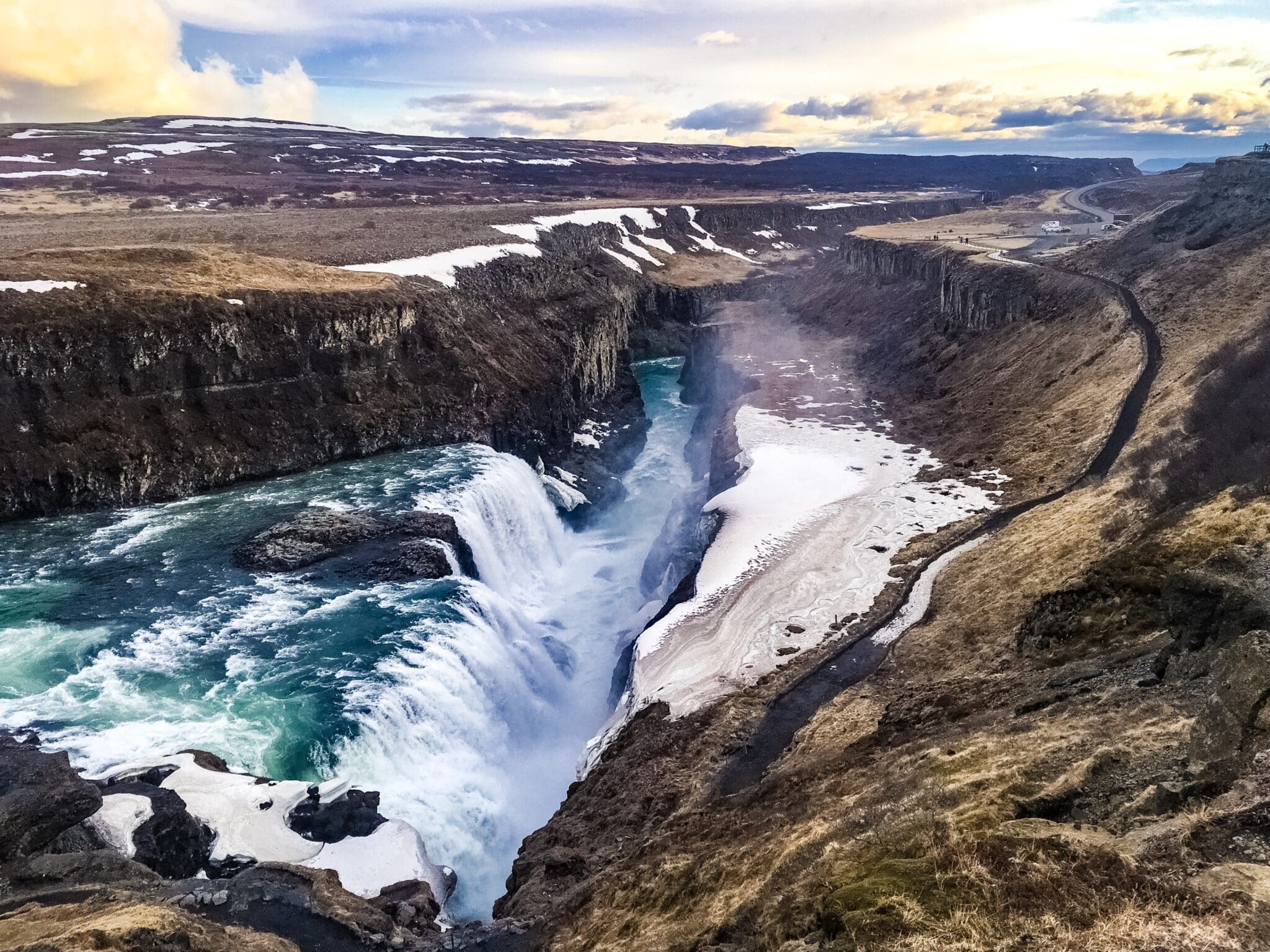
Gullfoss
Recognized as one of the most famous Iceland waterfalls, Gullfoss translates to “Golden Falls” as it reveals a beautiful golden hue when the sun hits the underwater minerals. It forms from the Hvítá River which receives its water from the country’s second largest glacier, Langjökull. Water flows down into a wide three-step staircase. This then divides into two stages that drop into a ravine 105 feet below. A path leads down the edge of the water where you can feel its immense power. Unfortunately, when we visited in April, the ground was frozen over & access to the viewing platform was blocked off.
History tells us that in 1907, foreign investors wanted to harness the massive power of Gullfoss by building hydroelectric power plants to produce electricity. Sigríður Tómasdóttir, the daughter of the farmer that owned the land, fought to protect the landmark & threatened to throw herself into the great falls. She even walked barefoot & bloodied for several miles to Reykjavík in protest! Eventually with the support of lawyer Sveinn Bjornsson, who would later become Iceland’s first president, helped annul the contract. Because of Tómasdóttir’s environmental efforts, we are now able to take in the beauty of one of Iceland’s iconic waterfalls today.

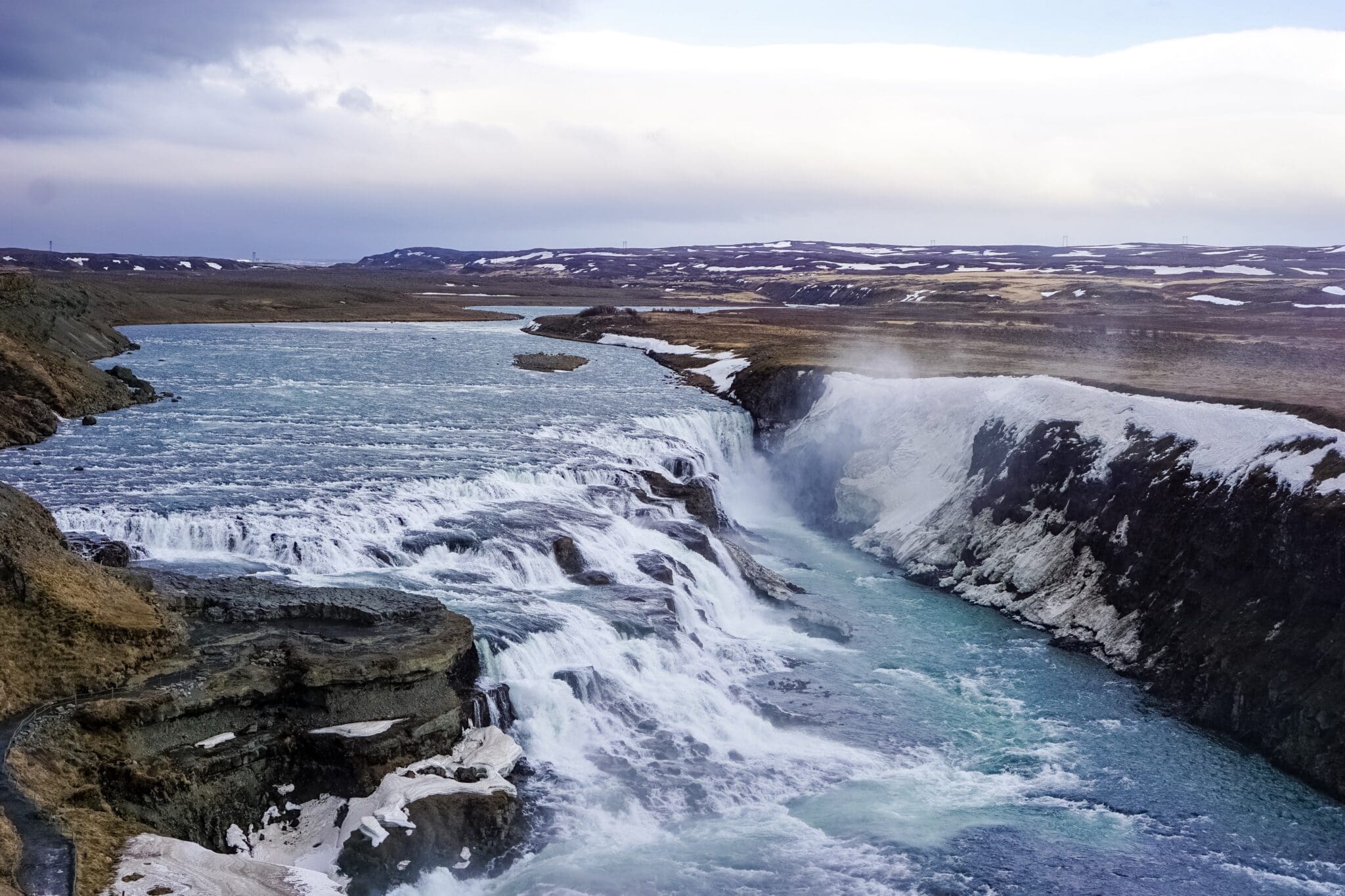

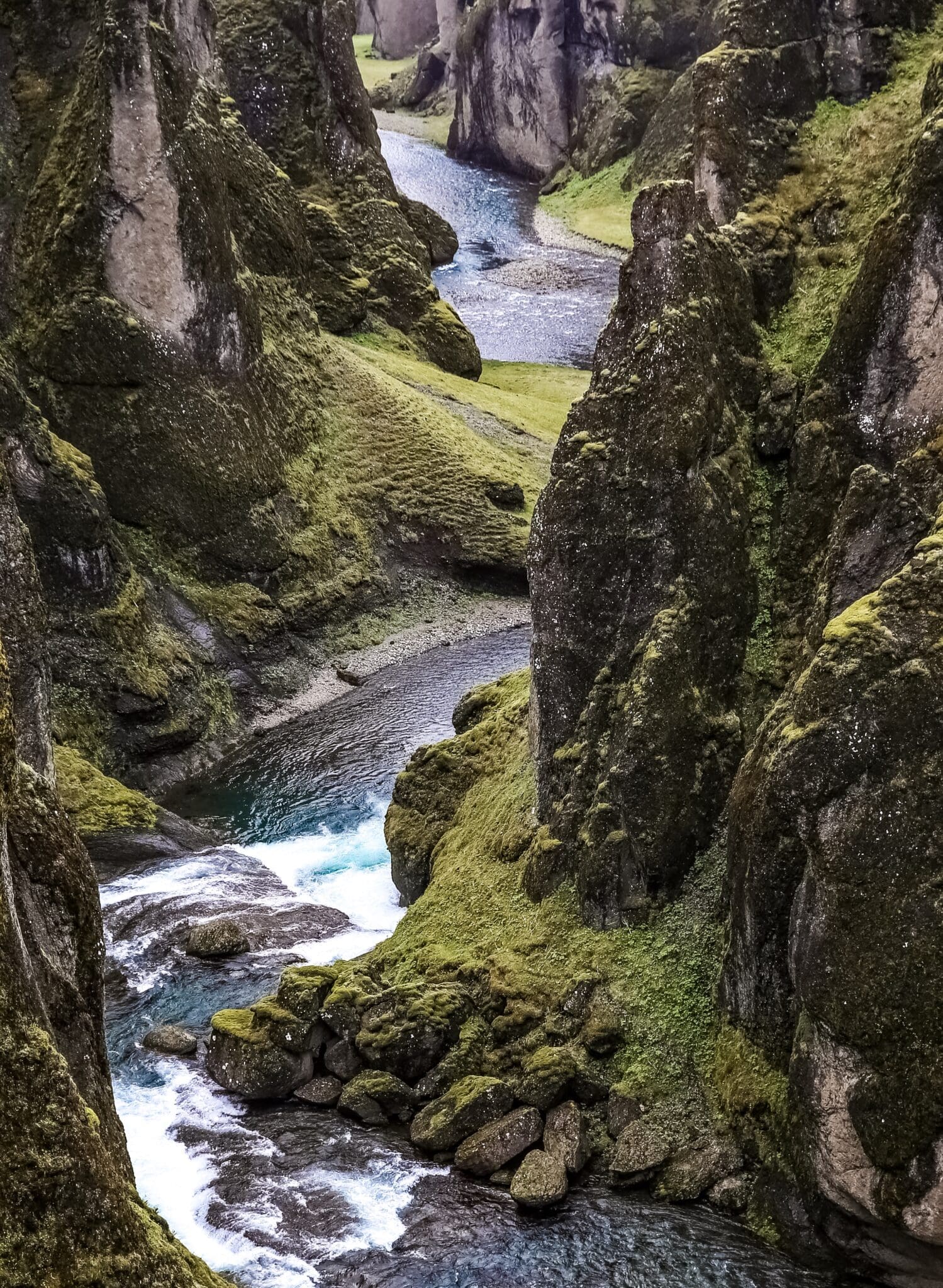
Þingvellir National Park
Þingvellir National Park (angelicalized as Thingvellir) is a very important region in Icelandic history & culture. In 930 AD, Viking settlers chose this site as the meeting place of Alþingi where 48 chieftains would discuss law & hold court. Currently it is the world’s oldest existing democratic parliament.
In 1930, on the thousand-year anniversary of Alþingi, Þingvellir was named a National Park. The Icelandic government soon recognized the importance of preserving its universal value as a cultural heritage site & natural environment. Therefore, Þingvellir was announced a UNESCO World Heritage Site in 2004.
The park is also well-known for its geography as it is situated on both the North American & Eurasian tectonic plates. These plates split apart approximately an inch every year! The drifting continents have created deep fissures that cause volcanic activity every now & then. Centuries of earthquakes have resulted in numerous ravines & valleys of lava fields. In fact, Þingvellir is the only place on earth where you can see this geological phenomena as most tectonic plates are located deep beneath the ocean.
In between the rift valleys lies a protected area known as Silfra, where many visitors go diving or snorkeling in its pristine waters. Silfra holds one of the world’s clearest fresh water with an underwater visibility of 330 feet! This is due to a unique natural filtration system involving meltwater from Langjökull Glacier passing through a dense lava field that has extremely fine texture. The water temperature stays consistently around 36°F throughout the year so you can even snorkel during the winter season. Unfortunately, because we were short on time, we chose to pass on this opportunity.
One Final Stop at Þórufoss
Located slightly off of the Golden Circle is another hidden gem, Þórufoss (Thorufoss), that may be worth your time. Feeding from the Laxá í Kjós River & falling 63 feet, this Iceland waterfall is a breathtaking sight to see. Game of Thrones fans may recognize Þórufoss from season 4 of the popular HBO show. It served as a backdrop where a Meereen goat-herder’s son threw rocks into the falls, awakening Drogon, Daenerys’ fearsome dragon, & consequently leading to the devastation of the valleys.
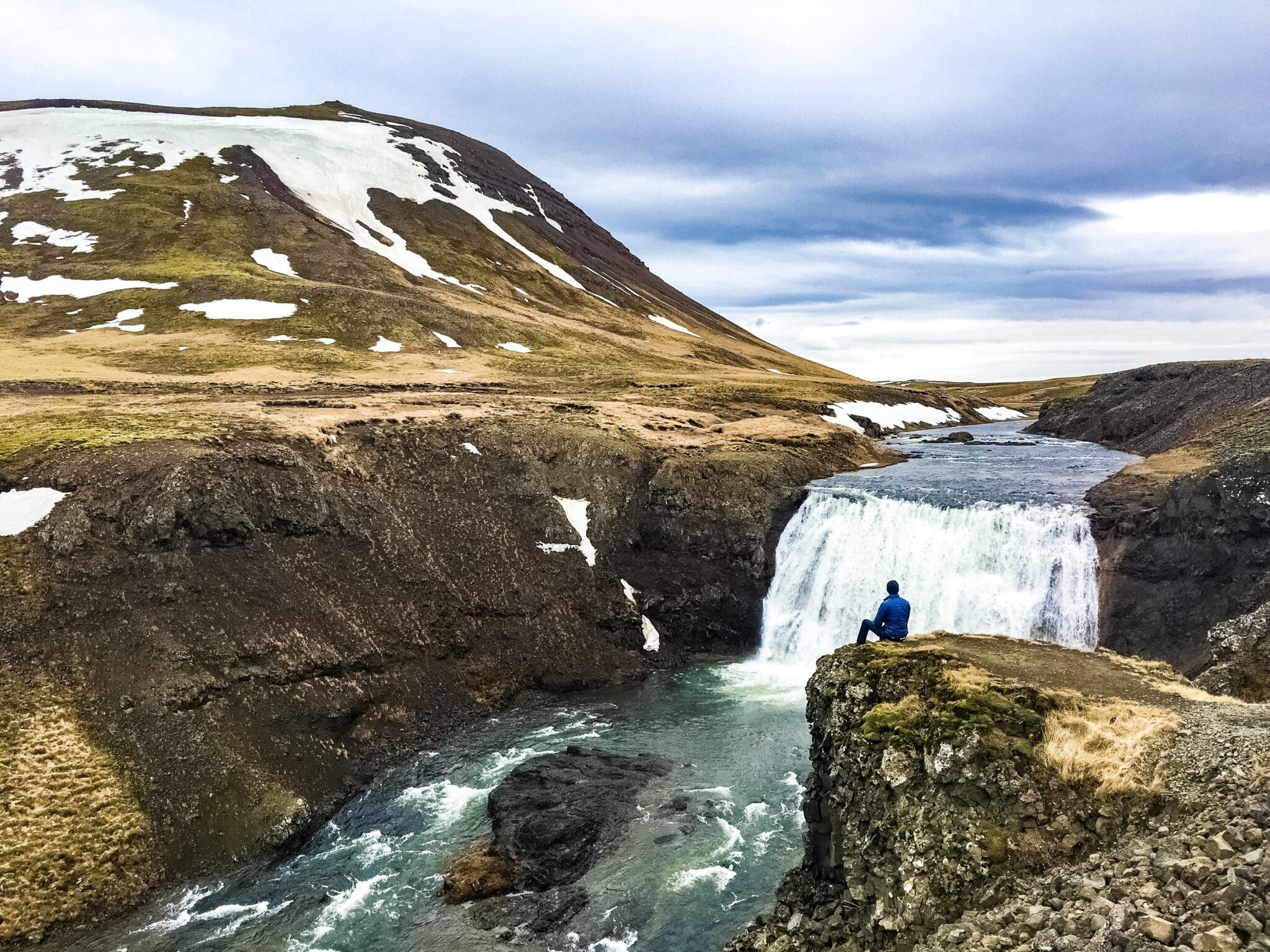
Angella’s Travel Tips
- There are no admission nor parking fees for the majority of attractions along the Golden Circle. However, once you arrive at Þingvellir National Park, there is a parking fee of 500 ISK ($4.00). Remember, this route gains a lot of traffic. Thus, another reason to head out early before the mainstream of tourists to guarantee a better experience.
- If you plan to visit just the Golden Circle itself, a rental car will suffice just fine (as opposed to a larger 4×4 or campervan). Make sure to fill up your gas tank as there are only a couple gas stations along this route. There are a number of inexpensive bus tours available as well, but I highly recommend self-driving to grant you the freedom to explore on your own schedule.
- Even in good weather conditions, the path to any of the Iceland waterfalls can be wet & slippery. Because of their immense spray power, you should prepare yourself with waterproof clothes & a sturdy set of traction shoes. Don’t forget to protect your camera gear as well!


travelersitch
November 4, 2019 at 10:21 amSuch beautiful photos! Makes me wanna go back!
Christa Anne
October 23, 2019 at 4:46 pmWow, these photos are amazing! Iceland is high on my list of must-visit places.
charlenemarie11
October 23, 2019 at 10:23 amThese waterfalls are gorgeous! I’m so jealous you got to see all of these.
Angella
October 24, 2019 at 9:26 amDon’t be jealous! Anyone can travel to Iceland & it is such a popular destination…lots of tours are available too! We just choose to go the difficult route by campervanning it ourselves! 😉
Mama Maggie's Kitchen
October 23, 2019 at 12:31 amWow! Sounds like a very wonderful place to visit. I will definitely add this on my bucket list. Hope you had a fun time.
Angella
October 23, 2019 at 10:08 amIt was the dreamiest honeymoon to one of the most beautiful countries in the world! I you love winter wonderlands, you must go go go!